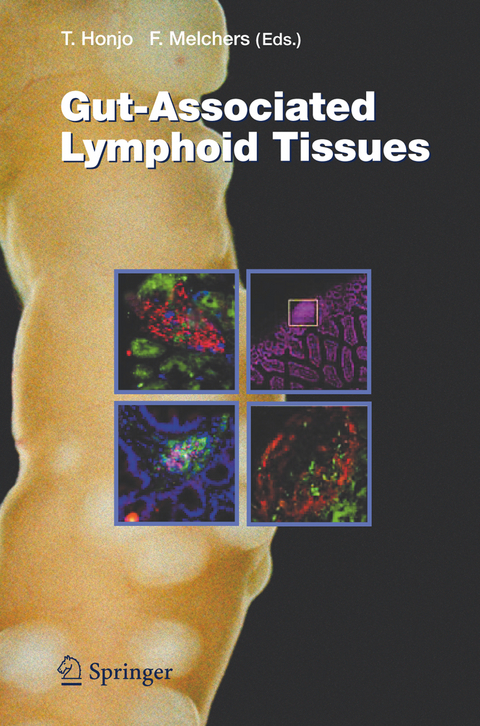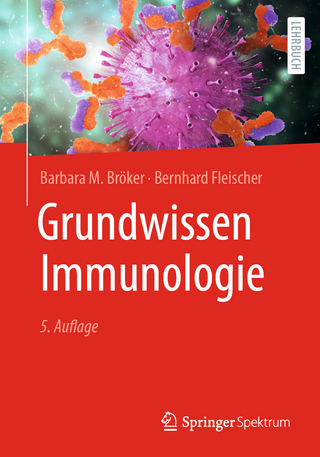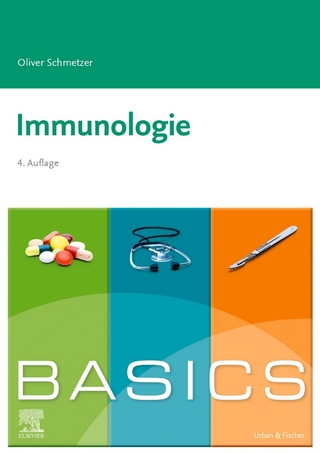
Gut-Associated Lymphoid Tissues
Seiten
2010
|
1. Softcover reprint of hardcover 1st ed. 2006
Springer Berlin (Verlag)
978-3-642-06794-5 (ISBN)
Springer Berlin (Verlag)
978-3-642-06794-5 (ISBN)
The intestine is the front line of the confrontation between pathogens and the immune system. However, it is also important to emphasize that we have a symbiotic relationship with innumerable bacteria in the intestine. In the gastrointestinal tract of mammals the lower intestine harbors around 1,000 12 species of anaerobic and aerobic bacteria, in densities up to 10 /mlinthe distal small intestine, the cecum, and the colon. A single layer of epithelial cells of the intestine protects the internal organs of the mammalian host from these bacteria. Below these epithelial cells the gut-associated lymphoid tissues (GALT), organized in Peyer s patches, cryptopatches, and isolated l- phoid follicles, as well as isolated, dispersed single cells in the epithelial layer (intraepithelial lymphocytes) and lamina propria, are composed of T l- phocytes, B lymphocytes, Ig-secreting plasma cells, and antigen-presenting cells such as dendritic cells. The importance of the gut barrier is striking, if we consider that in humans the epithelial surface, behind which the immune system faces and senses the endogenous bacteria, is estimated to be as large as a basketball court. Perhaps not surprising then, the gut contains appr- imately half of all lymphocytes of our immune system. Colonization of the intestine with the ?ora of commensal bacteria induces the development of the GALT, which in turn responds by the development of IgA-secreting plasma cells. Dimeric and multimeric IgAs can traverse the epithelial layer and are released in the gut lumen, where they bind bacteria.
Role of the Innate Immune System and Host-Commensal Mutualism.- Molecular Networks Orchestrating GALT Development.- Lymphoid Tissue Inducer Cells in Intestinal Immunity.- Specificity and Plasticity of Memory LymphocyteMigration.- IgA Adaptation to the Presence of Commensal Bacteria in the Intestine.- Intestinal IgA Synthesis: A Primitive Form of Adaptive Immunity That Regulates Microbial Communities in the Gut.- B Cell Recruitment and Selection in Mouse GALT Germinal Centers.- Structural Insights into Antibody-Mediated Mucosal Immunity.
| Erscheint lt. Verlag | 17.11.2010 |
|---|---|
| Reihe/Serie | Current Topics in Microbiology and Immunology |
| Zusatzinfo | XI, 210 p. |
| Verlagsort | Berlin |
| Sprache | englisch |
| Maße | 155 x 235 mm |
| Gewicht | 345 g |
| Themenwelt | Studium ► Querschnittsbereiche ► Infektiologie / Immunologie |
| Schlagworte | Antigen • autoimmune disease • Autoimmune diseases • Bacteria • B cell antigen receptor • Cell • Commensal microbiota • Diseases • food allergy • Immune evasion • inflammatory bowel disease • Lymphocytes • Mesenteric lymph nodes • Microflora • Mucosal immunity • Peyer's Patches • polyspecific intestinal IgA • tissue |
| ISBN-10 | 3-642-06794-8 / 3642067948 |
| ISBN-13 | 978-3-642-06794-5 / 9783642067945 |
| Zustand | Neuware |
| Haben Sie eine Frage zum Produkt? |
Mehr entdecken
aus dem Bereich
aus dem Bereich
Buch | Softcover (2023)
Lehmanns Media (Verlag)
19,95 €


